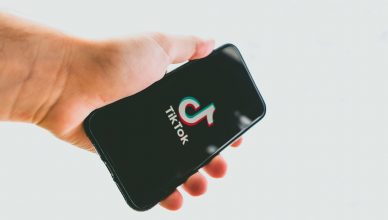This post is the last of five we’re releasing as part of our influencer strategy thought leadership series.You can download the full guide as a PDF right here.
Social networks are becoming more walled off, as evidenced by changes to the Instagram and Facebook platforms in recent years, as well as the emergence of TikTok’s popularity. What this means for the brand marketer is that individual social networks can no longer be the centerpiece of an influencer strategy. As with the demise of Instagram Likes, no single platform can be trusted to maintainyourbest interests or even influencers’ best interests.
Therefore, an important strategy in 2020 will be to focus on “full-stack influencers”, or influencers who operate across all the popular social networks as well as their own blog.
Additionally, influencers who are proficient at creating all media types — images, short videos, and long-form articles — will have an advantage in the shifting industry. Being able to produce content that works for all channels means that influencers can engage across demographics and beyond the fad of the day.
Blogs are More Important Than Ever
Blogs aren’t what they used to be. In the past, blogs were generally low-effort places to share one’s thoughts, as in the days of LiveJournal and Tumblr. Today, however, the full-stack influencer typically has a well-produced blog that serves as the central location for that influencer’s identity– something they can really own.
This is more important than ever due to the recession of open social networks. It is becoming ever more difficult to track audiences that span across different networks. Even public Instagram profiles now require a viewer to be logged into their own Instagram account, in direct conflict with the concept of “public”. Indeed, only Twitter still maintains a relatively open network, though this could change at any moment.
Influencers therefore need a truly public place to promote their identities and allow their content to be consumed publicly. Blogs, which are under the direct control of the influencer, are the perfect place to do this.
Under the full-stack model, a blog becomes the central repository for public content, while the influencer’s social audiences on Twitter and Instagram become a feeder for the blog. Under this model, influencers often post “exclusive” content to Instagram (like a few additional images from a photoshoot), while the real monetization occurs on the blog.
Is an Instagram Influencer Really an Influencer?
A different way to frame the concept of full-stack influence is the title question: is an Instagram influencer really an influencer? That is, if someone only has a following on Instagram, are they actually able to influence their audience?
This is a subtle, almost philosophical question with a likewise subtle answer. For a while (up until 2018), it seemed like Instagram would become an incredibly effective channel for purchase intent, when product links or ads were posted to the platform. This trend has since plateaued, however, as Instagram audiences become more distracted and Instastories became more popular. Nowadays, overall purchase intent on Instagram is average at best; on one hand, product link clicks on Instagram do carry a high purchase intent, but on the other hand, organic . click through rates are abysmally low.
Instagram’s level of influence has thus declined from the position of being a potential powerhouse of sales referrals to being simply a place to consume aspirational content. It is still unproven whether or not aspirational content consumption on Instagram actually leads to elevated brand awareness and purchase intent, therefore we have to conclude that an “Instagram Influencer” isprobably notan actual influencer in the classical sense (that is, someone who can drive their audience to take a particular action).
The Influence Ecosystem
Consider the full-stack influence concept as a hub-and-spoke model, with a blog or public website as the hub and each social network as a spoke. What does each spoke contribute to the hub, and how effective are they?
Surprisingly, while engagement rates (likes and retweets) on Twitter are generally very low (making Twitter-focused campaigns relatively ineffective), Twitter remains a very strong feeder for blog content. If an influencer curates their Twitter audience well, a significant portion of that audience becomes “guaranteed” readers of a new piece of blog content. Facebook and Facebook Pages are also an effective feeder of blog traffic, and a well-run Facebook Page can become a huge traffic driver to a blog and related marketing efforts.
Instagram, on the other hand, tends to keep its interactions inside the Instagram ecosystem, with users rarely exiting the app to visit other properties. A typical view-engage cycle for a piece of Instagram content lasts only a few seconds. This results in Instagram having a low value in the hub-and-spoke model. Similarly, TikTok and Snapchat, being completely walled-off, contribute very little to the influence ecosystem.
Pinterest can, at times, be a traffic driver, and pinned products do represent a significant purchase intent, however it is rare for an influencer’s own Pinterest to become a traffic driver to their hub. More often a certain amount of luck is needed for someone else to pin something that becomes viral. YouTube stands alone and remains a high-value channel for video content, but video content is expensive to produce and sales conversions are just as unpredictable as on other channels, so many brand marketers leave YouTube out of their influencer marketing strategies.
How to Focus on Full-Stack Influencers
To identify a high-value full-stack influencer, focus on the following traits:
- They have a high-quality blog with all the bells and whistles: newsletter subscription, sponsored content, and organic content. The influencer typically creates long-form content first on the blog, then promotes it across other channels.
- They have an active Facebook Page paired to their blog with a large fanbase and high engagement rates.
- They have an active Twitter account with lots of followers, and many Tweets are links back to individual blog posts.
- They have an active Instagram account with a growing follower count. While the Instagram account doesn’t contribute much traffic to the blog, the growing follower count serves as social proof of high-quality and compelling imagery.
Once you’ve identified and successfully recruited full-stack influencers, make sure your campaign brief requires a long-form blog post with accompanying Twitter, Facebook Page, and Instagram content. Publishing these components together will give you the best chance for exposure to a wide audience while also optimizing for brand recognition and purchase intent.




